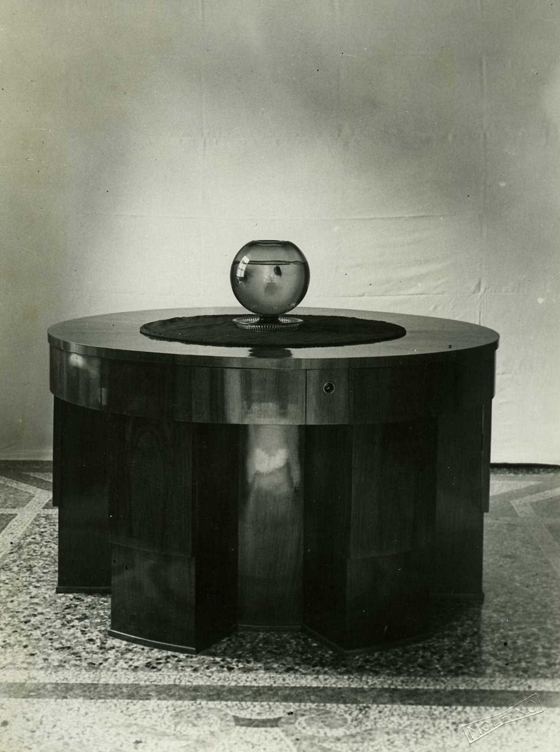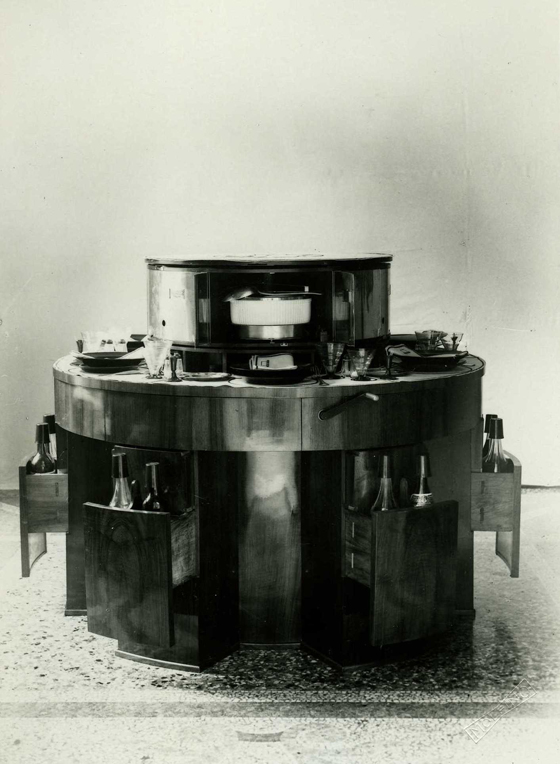The Wolfson Collection


italiano | english
The exhibition presents three complete dining room sets. Together
with the one by Piero Bottoni (1937), already on display, they provide
an overview of the stylistic evolution of Italian decorative arts
between the two world wars. These rooms invite viewers to ponder the
various ways of life during this time, family and social meaning, and
the influence of particular politic movements gaining popularity in
this period.
The furniture of the first room is by Ettore Zaccari (Cesena 1877
– Milan 1922), who owned an art furniture workshop in Milan. This
room represents a typical example of his furnishings, with
characteristic art deco stylings. His works are usually made of dark,
polished wood. They resemble period furniture, mostly from the
Renaissance, but are also similar to the most current international
contemporary works, such as the pieces of the French artist Maurice
Dufrène, as evidenced by the thick and lively decorative
carving, often gilded or painted. In this dining room there is a
feeling of the patron’s desire to individualize and personalize
their furnishings: the various family members’ names are carved
on the table and their monograms are on the backs of the chairs.
The dining room for the Anzellotti household was designed and carved in
1932 by the sculptor Umberto Bartoli (Leghorn 1888 – Florence
1977), who worked with the Studio Coppedè since the early
Twenties. This room combines art deco formal elements with
“Novecento” style motifs. The formal composition of the
cupboard’s sport trophies and of the putti placed on the four
corners of the table indicates an art deco matrix, whereas the
expressive response to the archaic simplification of the
“Novecento” style appears evident in the sport inspired,
carved figures. The iconographic choice traces back to a
commissioner’s request: the image of the footballer at the centre
of the cupboard refers in fact to Aldo Anzellotti’s football
past, and the picture of the lady skier on one of the corners of the
cabinet attests to his wife Bianca Cresti’s passion for skiing.
This theme matched the Fascist cult for courage and competition as a
metaphor of a pending military engagement.
L’Autarca ends the installation; it is a recent donation to the
collection of the Wolfsoniana. It consists of a round table and its
geometrical form has no decoration. It was designed by the Genoese
notary Angelo Fasce (Genoa 1878 – Ovada, Alessandria, 1943) who
also patented it in 1936 with the definition "Table containing all
things necessary for meals”. The most peculiar characteristic of
the work is that, due to a mechanism of weights and counterweights, it
is possible by simply turning a handle to lift various tops from its
central section containing everything needed for a full lunch. In this
way the guests could lunch without having to get up and without the
help of the waiting staff. The table is displayed with its original
“trousseau”: Richard-Ginori’s red earthenware plates,
bakelite coffee cups, Murano glasses, embroidered linen placemats, and
original menus, as well as some period photographs, which offer some
understanding to its intricate workings.

